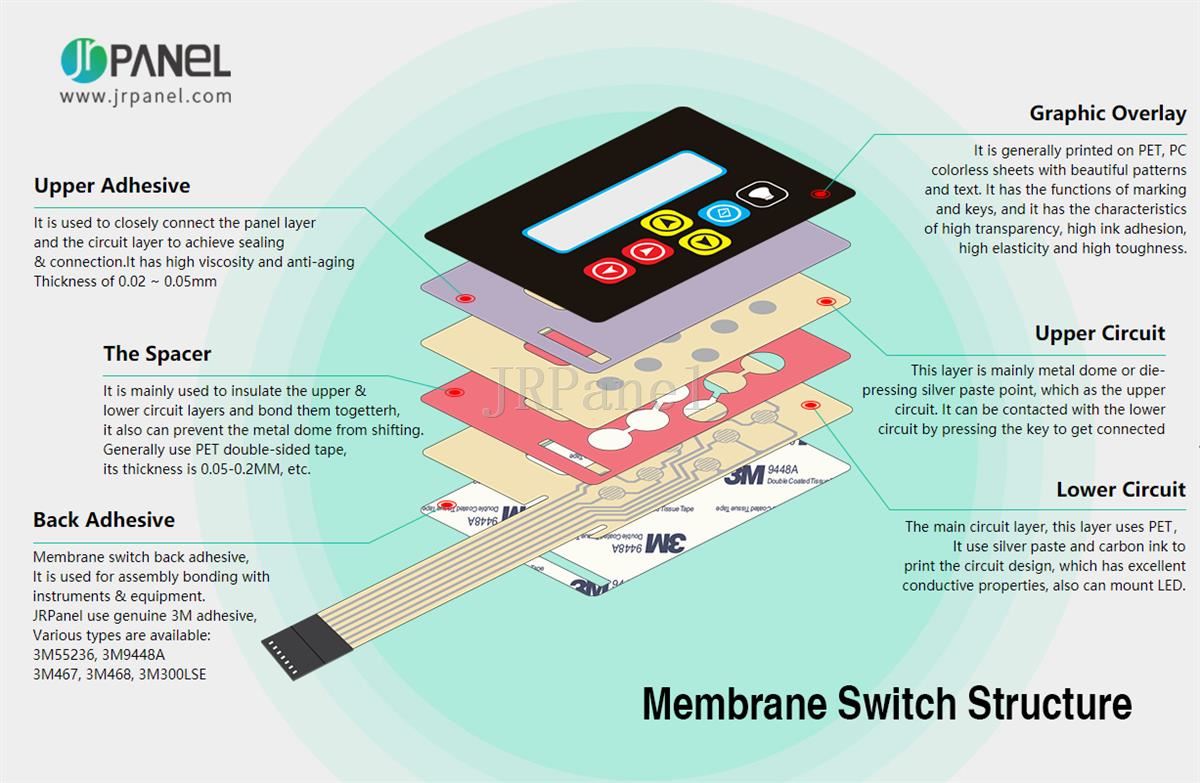Explore the Large Range of Industries Gaining From Membrane Switches Technology
Explore the Large Range of Industries Gaining From Membrane Switches Technology
Blog Article
The Ultimate Source on Membrane Switches Over: Layout, Functionality, and Applications
Membrane layer switches serve as an intriguing junction of design and capability, playing a crucial role in modern-day individual interfaces across different sectors. As we discover the diverse applications of membrane layer switches, it comes to be apparent that their flexibility and durability are vital in atmospheres ranging from health care to customer electronic devices.

Understanding Membrane Switches
Membrane layer buttons are a sort of user interface modern technology commonly utilized in various electronic gadgets, characterized by their thin, versatile style and capability. These buttons contain numerous layers that consist of visuals overlays, glue layers, and wiring, enabling a small and reliable interface for customers. They can be found in appliances, clinical devices, and industrial control board, supplying a reputable technique for customer communication.
One of the key benefits of membrane buttons is their capability to withstand pollutants such as dirt and moisture, making them ideal for environments where sturdiness is necessary. Their low-profile layout allows for seamless assimilation into various applications, while the adjustable graphic overlays boost individual experience by providing clear aesthetic feedback. In addition, membrane layer switches can fit a variety of modern technologies, such as tactile feedback and backlighting, further boosting their usability.
The manufacturing process for membrane changes typically includes screen printing, lamination, and die-cutting strategies, ensuring precision and uniformity in manufacturing. On the whole, membrane layer switches over stand for a effective and versatile option for contemporary digital tools, combining functionality with visual charm in individual interface design.
Trick Parts and Design Components
A range of key components and layout elements come with each other to produce an efficient membrane layer switch. At the core, the graphic overlay serves both functional and visual purposes, providing an easy to use user interface while shielding internal parts from environmental variables. The option of products, normally polyester or polycarbonate, affects longevity and responsive feedback.
Under the overlay, the sticky layer guarantees the switch adheres safely to the substrate, which can be metal, plastic, or glass. The spacer layer is vital, as it maintains the needed space in between the circuit and the overlay layers, enabling efficient actuation. Membrane Switches. Circuit traces, typically made from conductive ink or adhesive, are published on a flexible substrate, making it possible for electrical signals to be sent when stress is applied
Style considerations additionally include the plan of tactile domes or embossing that supply physical feedback to the individual, improving the overall experience. Furthermore, the layout and spacing of the switches need to be maximized for convenience of usage, making sure that customers can browse the user interface without effort. In general, these elements and layout components function synergistically to create a trustworthy, useful membrane layer button customized to particular applications.
Performance and Procedure Device
At the heart of reliable functionality for membrane changes lies their operational device, which helps with individual interaction with an easy yet effective style. These switches operate the concept of pressure activation, where a user applies pressure to a marked area of the switch (Membrane Switches). This action compresses the layers of the button, finishing an electric circuit that sends out a signal to the connected gadget
The construction normally consists of a leading graphic layer, a sticky spacer layer, and a lower circuit layer, which collectively create a robust interface. When stress is used, the leading layer collapses against the lower circuit layer, permitting conductive traces to link. This layout not only enables clear tactile feedback however also makes sure longevity and dependability, as the buttons are commonly resistant to dust and dampness.
Furthermore, the adaptability of membrane switches over enables for assimilation with numerous innovations, including LED indications and microcontrollers, enhancing their capability. By supplying a streamlined user interface that reduces mechanical wear, membrane layer switches over stay a favored choice in applications varying from consumer electronic devices to industrial tools, making sure optimum efficiency and user satisfaction throughout varied environments.
Kinds Of Membrane Buttons

One more considerable category is lit up membrane layer buttons, which include backlighting to enhance exposure in low-light problems. he said These buttons you can try this out are frequently used in control panels and control panels where clear presence is important.
Additionally, there are custom-made membrane layer switches over developed to meet particular dimensional, graphical, and functional demands. These personalizations can consist of special forms, shades, and layouts, permitting smooth assimilation right into various gadgets.

Applications Across Various Industries
How do membrane buttons boost functionality throughout varied markets? In the clinical market, membrane layer switches play a crucial duty in devices such as analysis devices and patient monitoring systems, where dependability and convenience of cleaning are vital.
In the automobile industry, membrane switches are generally utilized in control panels and control panels, giving intuitive controls that enhance motorist security and comfort. The customer electronic devices market additionally gains from their light-weight and adjustable functions, allowing sleek styles for smart devices and home appliances.
Additionally, membrane buttons find applications in industrial automation, where they contribute to effective machinery operation and surveillance systems. Their resistance to dust and dampness makes sure performance in requiring conditions (Membrane Switches). Furthermore, the food and beverage industry uses membrane layer switches for equipment control, where hygiene and resilience are critical
Conclusion
In verdict, membrane layer changes represent an important technology in user interface innovation, characterized by their one-of-a-kind layout and functionality. The convenience of membrane changes promotes their application across diverse industries, from clinical imp source gadgets to customer electronic devices.
Membrane changes offer as an interesting junction of design and performance, playing a pivotal role in modern user interfaces across various industries.Membrane buttons are a type of individual interface modern technology extensively utilized in various electronic devices, defined by their slim, flexible style and capability.At the heart of reliable performance for membrane layer switches lies their operational mechanism, which helps with customer interaction via a simple yet reliable layout. These buttons operate on the concept of pressure activation, where an individual applies force to a marked area of the switch.In final thought, membrane layer switches over represent a critical development in customer interface modern technology, characterized by their one-of-a-kind layout and capability.
Report this page